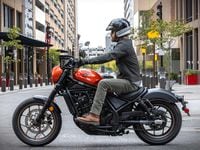Something strange happens whenever there are more than two kinds of cruisers parked in the palatial _Motorcycle Cruiser _garage. Fingers get twitchy and eyes dart about nervously. Somehow, sitting in front of the computer becomes a challenge. We're well aware of these symptoms and the damage they can do to our productivity levels. After all, we're seasoned professionals. We learned long ago that the only cure for this obvious case of wanderlust is a road trip! Uh, we mean comparison test! (Just in case the bean counters are reading.)
That's right, when spring is in the air and the garage is full of bikes with fresh tires and no bugs on the headlights, we simply won't get anything done until we take a nice long ride. Two days will suffice, but three or four are always better. So with you, dear reader, in mind, we took three cruisers with hard bags and fork-mounted windshields out for a jaunt, a big, sweeping loop through some of our favorite California scenery, all in the name of research! Yes, by the end of a few days of exhaustive, scientific testing, we're now able to tell you which of the hard baggers works the best, holds the most, goes the farthest, and even looks the best (gasp) naked.
The participants include an old standby, a recent update and a new model: the Harley-Davidson FLHR/IRoad King, the Kawasaki Vulcan Nomad 1600 and the Yamaha Royal Star Tour Deluxe respectively. The rogues handling these machines are none other than perennial favorite staffer Andy Cherney, former staffer Evans Brasfield (filling in for an ailing Jamie Elvidge) and new guest tester Greg Brenner. Our route was dictated by two somewhat divergent desires. First, we wanted to see Death Valley in eastern California while it still held a large quantity of water from this winter's record-setting rains. Second, we had to meet Kevin Wing in western California (the othe side of the state) to get the photos for this article.The things we do for you readers....
Pack Up Your Troubles
Over the years we've learned that the secret to getting out of town cleanly is to make the meeting point a restaurant rather than someone's house. So we have a regular group of fine eating establishments selected at the four points of the compass (well, three points, actually, since the Pacific Ocean is to our west) to use depending on our planned route of departure. Since we would spend the first part of our ride traveling east, we stocked up on carbohydrates with the various breakfast slams at the Denny's on Interstate 10 in Pomona. Between mouthfuls, we compared notes on packing the baggers.
The Road King has the smallest bags, with a narrow opening that requires some items to be squeezed in. While this isn't really an issue for three guys riding solo, going two-up might make space a little tight because passengers seem to require more cargo than riders. The top of the bags closes firmly and can be left locked or unlockedwhich is nice when you're spending the day in the saddle and may want to get to your camera or water bottle.
Opening with a simple push of a button, the Yamaha's bags are slightly wider and about the same depth as the Harley's and can also be left unlocked for easy access. However, the latching mechanism takes up a few inches of valuable space on the inside edge of the bags. If you pack carefully with soft items in the center of your bag liner/tote bag, you won't feel the latch compromises your carrying ability too much. Closing the lid rewards you with a firm click, but we always found ourselves pulling up on the lid to make sure it had latched.
The Nomad's bags were the prettiest and most capaciouswith one caveat. Since the bags are side-loading, you really need Kawasaki's accessory bag liners to take full advantage of the space. For daily use, having the liners doesn't really make a difference. If you need to carry small things that may fall out under the standard crisscrossing straps, any old duffel will do. When out on the road for a few of days, where you'll need to pack more stuff and carry it into a motel at the end of the day, Nomad riders owe it to themselves to buy the liners designed specifically for their bags. That way you don't have to suffer the indignity of realizing your frilly underthings have been dangling out collecting road grime for the last 400 miles. As a safety feature, the Nomad's bags will not openor closewithout the key. While this can be a bother when you want to take out just one item at a scenic overlook, when you consider the consequences of not latching the bag completely, the trouble seems worth it. The Kawasaki is the only bike that sports functional helmet locks, tucked discretely under each bag's tip-over bar.
Although we encountered no rain on our trip, our previous experience with the Nomad's and Road King's bags is that they will withstand the heaviest storms as long as they aren't grossly overpacked. We'd expect the same to be true of the Tour Deluxe.
Against the Wind
The reality of living in any big city is that getting away requires some time on an interstate highway at the beginning and end of a trip. While time on the superslab may be a nuisance to riders on holiday, we actually can get a good amount of actual work done before we move to two-lane rural highways. As we progressed through our bike swaps every 50 miles or so, we reached a consensus on a few points rather quickly.
First, the windshields on all three bikes are too high. Some are just less intrusive than others. The Royal Star's windshield is the tallest of the bunch. So tall our tallest rider (at just shy of 6 feet) had to either strain upward to see over the Lexan or slouch down to keep the edge from crossing the center of his field of vision. This posed enough of a problem that had we been on an extended trip we would have probably taken a hacksaw to it as we did to a Royal Star Venture on our trip to Alaska. Next in line, the Nomad's windshield may be adjustable over a two-inch range, but that still isn't enough for riders 5 foot 10 inches and under. With the average height for a Caucasian American male checking in at that height, Kawasaki has made this windshield too tall for a large segment of its riders. Finally, while the FLHR/I has the lowest windshield of the trio, our shortest rider was still annoyed by the edge of the screen crossing the meat of his visual plane. The good news for Tour Deluxe and Road King owners is that shorter windscreens are available directly from the manufacturers. Yamaha offers screen replacements that are seven and 11 inches shorter than stock, while Harley will sell you a four-inch-shorter version of its screen. As of this printing, Kawasaki has not announced whether it has a reduced-height screen available.
In motion, the three windscreens offer varying levels of protection. Since the Road King lowers are optional accessories, it offers the least wind protection, which made for a chilly ride over the Cajon Pass. Once we dropped into the warmth of Death Valley, this extra breeze was appreciated. Next in line is the Nomad. It offers ample wind protection with just enough high-frequency buffeting to warrant comment when battling headwinds strong enough to blow tumbleweeds down the interstate. Since the lowers can be removed with an Allen key, we'd probably do just that for more cooling airflow during midsummer tours. In the morning chill and the brisk ride home at the end of our trip, the Tour Deluxe is the bike to ride. The massive windshield combined with the lowers mounted solidly to the frame creates a still pocket of air to help the rider hang onto body heat. The flip side of this setup is that in hot weather the Yamaha can get pretty roasty-toasty, particularly around the feet. During one extended climb out of a valley, one rider said it felt like he was riding in a car with the heat on high blasting his boots. Since the lowers are permanently mounted, an adjustable vent for the tootsies would be nice.
Although these bikes are meant for racking up miles, the windshields on all three are easily removable. Both the Harley's and the Yamaha's can be stripped off in less than 10 seconds. Really. Just release the two clips on the Tour Deluxe (the King doesn't require this step), tilt the shield and lift it free. You'll spend more time taking the screen to your motel room. The Yamaha's backrest slips free in a similar manner. While this ease of removal is darn convenient, it's too bad there isn't some simple locking device on these parts to make sure they're still on your bike when you return to it after a long dinner. The Kawasaki requires a little effort to remove the eight Allen bolts to free it of its windshield and lowers. In reality, the process takes less than 10 minutes. However, putting the shield back on without an extra set of hands can get tedious. The Nomad's passenger backrest is not easily removable.
When stripped of their windshields, the bikes look completely different—almost like owning a second motorcycle. The hardware remaining on the two bikes with the quickly removable windshields is barely noticeable. The mounting brackets on the Nomad stand out, but not glaringly so. We would have loved to remove the Vulcan's backrest to complete the sleek look. The Royal Star's cool, chrome dash containing the speedometer provides a striking accent to the handlebar, making the Tour Deluxe the best-looking in the buff. Riding the shieldless bikes in the evening heat of Death Valley was a dream. After a day of racking up miles, a short jaunt to a trail head in the open air was a pleasant refresher. On the trip back to the motel after our hike, the increased airflow cooled us. Harley and Yamaha made the right decision when they allowed for such easy screen removal. Touring isn't just about getting to your destination. You need to think about what you're going to do while you're there, too.
View from the Saddle
The contact points with a motorcycle are the defining factor in long-distance comfort. Yamaha's Tour Deluxe hit the ball out of the park with its big, nicely sculpted, comfy seat, which holds the rider in an ideal location with just enough wiggle room to redistribute pressure spots on long stints in the saddle. The bar pulls back the rider into an almost perfect position for racking up miles. Of course, this grip location carries a price. In parking-lot maneuvers, the Royal Star frequently attempts to trap knees between the grip and the tank. Our test passenger was supremely comfortable, coddled even, on the Star.
Given our rather passionate relationship with the Nomad since we rode the first model across the continent, we were surprised when it landed in second place in the comfort department. Kawasaki's redesigned seat is indeed comfortable, but the rear portion's curve hit our longer-legged riders uncomfortably in the coccyx, leading to end-of-day discomfort. We preferred the saddle it replaced. The Nomad's handlebar also sports a nice bend with well-positioned grips—but without the annoying knee-trapping. Our test passenger, who is on the petite side, found the Kawasaki's pillion to be large and roomy, perhaps too roomy front-to-back between her and her beau. She also felt she was higher and more exposed on the Nomad. Fortunately, she had the sizable grab rails to hang onto. Unfortunately, when no one is grabbing those rails, their styling and the backrest they carry overpower the clean lines of the rest of the Vulcan, cluttering up an otherwise swoopy, elemental design.
The Harley trailed the rest by a good margin when it came to comfort. It was the only bike of the trio to feel as though its floorboards were in the wrong place. When the feet-forward and slightly too-high leg position was coupled with the forward and too-low handlebar, the rider was folded into a shape unconducive to long mileage. In fact, the poor state of the Road King's handlebar is such common knowledge that our guest tester, Brenner, said when he bought his Road King he refused to pick it up until an aftermarket bar was mounted. As for the seat, well, when terms like "unforgiving saddle" (or was it "unforgivable"?) are tossed around in discussions, the news can't be good. Our pillion echoed our feelings about the firmness of the seat and requested the optional backrest.
Seats aren't the only parts of the bike we interact with, though. The instrument clusters are vital to our riding experiences. The Yamaha's homage to the Ford Fairlane was the pick of the litter when it came to sheer visual style, but the Kawasaki ran a close second in the information delivery department. Cover the LCD odometer and you'd be hard-pressed to separate the speedometer assembly of the current Road King from a 10-year-old one. Perhaps that's a bonus to some people, but since we live in the real world, a clock would be appreciated. The speedometers of the Harley and Kawasaki were in perfect sync with each other, with the odometers matching exactly at almost every gas stop. The Yamaha's counters are consistently optimistic. While OE mirrors usually favor function over style, the Road King also comes up lacking here. The teardrop shape puts the tapered edge toward the outer portion of the mirror, limiting the rearward view in the section of the glass that would provide the most information.
Power to Move You
While the components of the baggers that make them touring mounts are important, we know you're also concerned about the usual performance-related stuff, too. This class of bikes currently offers two twins and a V4 for engine configurations. The Nomad at 1552cc steps in with the most displacement, followed by the Road King with 1450cc. The Tour Deluxe brings up the rear with 1294cc. The performance, however, doesn't stick to this order.
In most situations, the Tour Deluxe snappily responds when rolling on the throttle. The Yamaha always seemed game for whatever task we threw at it (which is a testament to the improved power delivery over previous-generation Royal Stars). Even though it was the only carbureted bike on this ride, the mixers felt spot-on from below sea level in Death Valley to more than 6000 feet in mountain passes. The Royal Star did, however, have the worst gas mileage at 33.5 mpg, which made its average range 11 miles shorter than second place, despite having the same 5.3-gallon capacity of the Kawasaki. Another surprise was that the biggest-feeling bike of the bunch had the most anemic exhaust note. Around town a high-pitched whistle from somewhere in the long intake tract behind the lowers was distracting. On the highway, wind and road noise mask it. The transmission is slick and smooth. The easy-to-modulate clutch makes low-speed maneuvers a snap. The nifty cruise control garnered the most comments of any feature on all three bikes. Even when traveling uphill over a mountain pass against a headwind blowing around 20 mph with gusts over 30 mph, the cruise control maintains its speed with aplomb. Once you become accustomed to the throttle grip rotating under your hand as the servo motor does its thing, you're on your way to long-distance nirvana.
While bumping the Nomad's displacement, Kawasaki made sure the engine kept the trademark smoothness we've always loved. The improved powerplant is torquier in the bottom end and midrange but, oddly, never felt as immediately responsive to throttle inputs as the Royal Star. Given the information our gluteal dynos were delivering, we were quite surprised when the Nomad handily walked away with the top-gear roll-on races from 60 mph—even with the heaviest rider aboard. This held true from 60 to 80 mph, where the Yamaha gathered up steam and started reeling in the Nomad. The fuel economy of the 1600 slides right into the middle of our trio at 35.7 mpg for a class-winning average range of 189 miles (one mile more than the Harley). The transmission snicked between gears seamlessly. Initially, the clutch engagement was smooth, but as the miles rolled on, particularly when hot in traffic (or doing endless U-turns for a photographer), the clutch began to develop some of the grabbiness that has plagued the 1600 Vulcans we've tested. Overall, the Nomad's new engine proves to be a nice update.
Given how much we've liked the Twin Cam engines since Harley introduced them, we don't understand the Road King's lackluster performance. Have the other bikes gotten that much better, or did we simply get a flaccid Road King? We're not sure. Regardless, when it came to passing slow-moving traffic on two-lane highways, we always felt like we had to time roll-ons to allow the bike to build up speed rather than just twisting the throttle and passing. On the plus side, the fuel injection is glitch-free, allowing the rider to modulate the throttle without fear of hiccups in a variety of conditions. The transmission shifts solidly, which is a good thing because we had to stir the gears frequently to keep up with the other bikes. The throttle and clutch controls on the Road King are the stiffest of the bunch. No big deal, but they do require more effort. Long-distance riders will appreciate the fact that cruise control can be ordered as a factory accessory, though our test bike did not have it. The FLHR/I, as is typical of Twin Cam engines we've tested, delivered the best average gas mileage of 37.7 mpg.
Handle This
Despite the fact that these are big, heavy bikes, you can hustle them around corners pretty well. The Road King, which has the most immediate steering response, never feels completely settled in turns. Ramp up the speed and the sensations become downright unsettling. In high-speed sweepers, the Harley's hinge in the middle flexiness can upset the chassis—and consequently the rider. The suspenders do their best to cope with this flex, and for the most part they do. Only sharp-edged bumps tend to upset things.
While not as immediately responsive as the Road King, the Tour Deluxe loves to go around corners. Changing lines, transitioning from one turn to another, whatever you want to do, the Yamaha will do it enthusiastically. Up to a point. And that point would be the Royal Star's ground clearance. A few more degrees of lean angle would be greatly appreciated. The overall suspension plushness works against the bike here by allowing hard parts to touch down earlier than they would with a firmer ride. Despite the lack of ground clearance, the Star handles well and predictably, giving the rider the confidence to enjoy winding roads.
The Nomad was the most popular bike whenever the roads got twisty. Although it steers slower than either of the other bikes, the wide bar gives the rider ample leverage to muscle the bike when necessary. Changing lines midcorner happens easily. The suspension feels slightly mismatched front and rear, with a firm fork and soft rear. We suspect bumping up the air pressure in the shocks a couple of pounds would improve things, but we neglected to pack a mini-pump for the tour. While ranking in the middle in terms of ground clearance, the Nomad's stiff chassis and predictable steering make this the bike to beat in the mountains.
One area in which all the bikes could use a little improvement is in braking. While each bagger is capable of being hauled down from speed relatively quickly, they all require a fairly high level of effort. Both the Kawasaki and the Yamaha should have four-piston calipers up front instead of the single-action two-piston units. These are not price-point, entry-level cruisers. Surely the manufacturers can afford this relatively minor expense to improve the capabilities of their motorcycles. (In fact, the Yamaha has a four-piston caliper for the rear brake.) Since the Harley has four-piston calipers, perhaps changing the master cylinder or pad compound would improve its braking performance. As they stand, the brakes on these bikes are merely OK when you're carrying a load downhill at elevated speeds.
Summary Report
Often on our tours one clear winner moves ahead of the pack and garners a consensus amongst the testers. In this trio, we weren't so lucky. Don't worry, we're not going to weasel and say there was no winner. Rather, the winner of the baggers comparison is determined by what your definition of a touring cruiser entails. If you're so concerned with how the bike performs out on the road that you're willing to forgo luxuries such as cruise control and an easily removable windshield, the Nomad is the bike for you. It's stylish and the most well rounded bike of the three. If you value the little luxuries such as cruise control, quick release components and a supremely comfortable seat, enough to trade some performancenamely cornering and stoppingthe Royal Star Tour Deluxe is the winner. The Road King, sadly, comes up short in too many categories to even be close to the others in the final standing.
In the end, the beauty of the current generation of hard baggers is that they're all competent motorcycles that can be used for more than just interstate travel. Besides, with a thoughtful application of aftermarket and factory accessories, these bikes can be further refined to perform the way you think a touring cruiser should.
RIDING POSITIONS
Evans Brasfield: I tend to prefer more elemental touring and shy away from bells and whistles. So normally the Nomad would be, without question, the cruiser I'd take on a tour. I've ridden one cross-country and on multiple trips up and down the Left Coast, so I have a comfortable relationship with the Nomad. However, the Tour Deluxe threw a monkey wrench into my normally easy choice. Yes, the bike feels bigger and has more gadgets. Ironically, one of the luxury features really appeals to my elemental side. The ability to remove the windshield and backrest in seconds is a huge selling point for this bike. And then there's the cruise control. On long rides, my throttle hand lets the mph climb the longer I'm on the road, leading to more tickets late in the day than in the morning. Setting the cruise to a reasonable speed is a wonderful feature. These two are almost enough to lead me away from the Nomad, but not quite. Since my tours follow primarily meandering roads, I'll select my favorite based on out-and-out handling. However, if I were taking the interstate across the continent—or even just over a few state lines—I might just give in to the siren song of cruise control. Former Motorcycle Cruiser_ staff editor Brasfield has just finished writing his latest book, How to Modify Your Metric Cruiser for release in December 2005. Find out more at www.cruiserprojects.com._
Andrew Cherney: Surprises all around this time, my friends. Mostly because the Nomad didn't win this test hands down, but also because, of three well-heeled and firmly established manufacturers, only Yamaha figured out these bikes absolutely need cruise control. Um, hello, they're for touring. Anyone listening?
OK, now that I've vented, I can also tell you that the Royal Star Tour Deluxe wasn't the clear winner for me just because of that one feature. It was, after all, bulky, occasionally sluggish and saddled with those heinous air intakes sprouting from the floorboards. No design awards for those, guys. But it worked, and with its slew of convertible accoutrements it was capable of switching personalities more easily than Sybil right out of the box. The Nomad's still a favorite ride, and would be my choice for any twisty road, but that's just not enough anymore for the long haul. And I'd be a fool to say no to the Road King around town, but out on the open road, its age and limitations are starting to show.
Greg Brenner: As equipped, the Nomad is my favorite for its overall looks and ergonomics. Yamaha's Royal Star is second, but I don't like some of the styling and comfort features. I find the Road King (my favorite going in) to be the biggest disappointment. Its riding position is uncomfortable and its power lean. Strangely, however, I would not actually buy the Nomad for two significant reasons. One, the windshield and backrest are not easily detachable. To me, this makes it more a touring bike, not really a cruiser—a cruiser I would take to The Rock Store on Sunday, anyway. Also, the Nomad does not have cruise control, and I understand it is not available from the manufacturer. This is a real negative for a long-distance rider. I bring up these two issues because they are not easily or practically corrected by a buyer.
I might look more seriously at the Yamaha, as its deficiencies seem more correctable than the Kawasaki's, but in the end it's the Road King (my least favorite at the end of our ride) that offers the real-world advantage of being the most easily customized. Cruise control is available and the windshield is detachable. Riding comfort can be fixed with different bars/seat. Power is only a factory Stage 2 kit away. Plus, it does fit in best at The Rock Store.
SPECIFICATIONS
2005 HARLEY-DAVIDSON ROAD KING
Designation: FLHR/I
Suggested base price: $16,595
Standard colors: Black
Standard warranty: 24 mos., unlimited miles
ENGINE
Type: Air-cooled 45-degree V-twin
Valve arrangement: OHV, 2 valves, operated by pushrods
Displacement, bore x stroke: 1450cc, 95.2mm x 101.52mm
Compression ratio: 8.9:1
Carburetion: EFI, 44mm throttle bodies
Transmission: Wet clutch, 5 speeds
Final drive: Belt
CHASSIS
Wet weight: 769 lbs.
Seat height: 30.7 in.
Wheelbase: 63.5 in.
Rake/trail: 26 deg./6.2 in.
Front tire: MT90B16 Dunlop 402F
Rear tire: MT90B16 Dunlop 402
Front brake: 2, four-piston calipers, 11.5 in. disc
Rear brake: Four-piston caliper, 11.5 in. disc
Front suspension: 41mm stanchions, 4.6 in. travel
Rear suspension: 2 dampers, 3.0 in. travel, adjustable for air preload
Fuel capacity: 5.0 gal.
Instruments: Speedometer, LCD odometer/tripmeter, fuel gauge, warning lights for high beam, turn signals, neutral, oil pressure
PERFORMANCE
Fuel mileage: 31.6-46.3 mpg, 37.7 mpg avg.
Average range: 189 mi.
SPECIFICATIONS
2005 KAWASAKI VULCAN 1600 NOMAD
Designation: VN1600N
Suggested base price: $12,999
Standard colors: Metallic dark blue, black/silver
Standard warranty: 12 mos., unlimited miles
ENGINE
Type: Liquid-cooled 50-degree V-twin
Valve arrangement: SOHC, 4 valves
Displacement, bore x stroke: 1552cc, 102.0mm x 95.0mm
Compression ratio: 9.0:1
Carburetion: EFI, 36mm throttle bodies
Transmission: Wet clutch, 5 speeds
Final drive: Shaft
CHASSIS
Wet weight: 828 lbs.
Seat height: 28.4 in.
Wheelbase: 66.5 in.
Rake/trail: 32 deg./7.2 in.
Front tire: 150/80-16 Bridgestone Exedra
Rear tire: 170/70B-16 Bridgestone Exedra
Front brake: 2, single-action, four-piston calipers, 11.8 in. discs
Rear brake: Single-action, two piston caliper, 11.8 in. disc
Front suspension: 43mm stanchions, 5.9 in. travel
Rear suspension: 2 dampers, 3.9 in. travel, adjustable air preload, rebound damping
Fuel capacity: 5.3 gal.
Instruments: Speedometer, LCD odometer, tripmeter, fuel gauge, clock; warning lights for high beam, turn signals, EFI, neutral, low fuel
PERFORMANCE
Fuel mileage: 26.7-41.1 mpg, 35.7 mpg avg.
Average range: 189 mi.
SPECIFICATIONS
2005 YAMAHA ROYAL STAR TOUR DELUXE
Designation: XVZ13CTT
Suggested base price: $13,999
Standard colors: Silver/black, red/black
Standard warranty: 60 mos. (5 years), unlimited miles
ENGINE
Type: Liquid-cooled 70-degree V4
Valve arrangement: DOHC, 4 valves
Displacement, bore x stroke: 1294cc, 79.0mm x 66.0mm
Compression ratio: 10.0:1
Carburetion: 4, 32mm CV carbs
Transmission: Wet clutch, 5 speeds
Final drive: Shaft
CHASSIS
Wet weight: 855 lbs.
Seat height: 29.1 in.
Wheelbase: 67.5 in.
Rake/trail: 28.8 deg./5.16 in.
Front tire: 105/80-16 Bridgestone Exedra
Rear tire: 150/90-15 Bridgestone Exedra
Front brake: 2, single-action, two-piston calipers, 11.7 in. discs
Rear brake: Dual-action, four-piston caliper, 11.7 in. discs
Front suspension: 41mm stanchions, 5.5 in. travel, adjustable air preload
Rear suspension: Single damper, 4.1 in. travel, adjustable air preload
Fuel capacity: 5.3 gal.
Instruments: LCD speedometer, odometer, dual tripmeter, fuel gauge; warning lights for high beam, turn signals, neutral, oil pressure, overdrive, cruise control
PERFORMANCE
Fuel mileage: 29.9-40.0 mpg, 33.5 mpg avg.
Average range: 178 mi.
_Additional motorcycle road tests and comparison tests are available at the Road Tests section of MotorcycleCruiser.com. For a complete listing of the motorcycle tests available, see the _Motorcycle Cruiser Road Test Finder.



































/cloudfront-us-east-1.images.arcpublishing.com/octane/OQVCJOABCFC5NBEF2KIGRCV3XA.jpg)
/cloudfront-us-east-1.images.arcpublishing.com/octane/F3O2DGLA4ZBDJGNVV6T2IUTWK4.jpg)
/cloudfront-us-east-1.images.arcpublishing.com/octane/ZXYQE3MHLFDSPKNGWL7ER5WJ4U.jpg)
/cloudfront-us-east-1.images.arcpublishing.com/octane/RDF24VM7WVCOBPIR3V3R4KS63U.jpg)
/cloudfront-us-east-1.images.arcpublishing.com/octane/W7RSIBFISNHJLIJESSWTEBTZRQ.jpg)
/cloudfront-us-east-1.images.arcpublishing.com/octane/AERA26ENRNBW3K324YWCPEXYKM.jpg)
/cloudfront-us-east-1.images.arcpublishing.com/octane/YWX3YX7QBBHFXFDMEEEKRG4XJE.jpg)
/cloudfront-us-east-1.images.arcpublishing.com/octane/I7OKI53SZNDOBD2QPXV5VW4AR4.jpg)
/cloudfront-us-east-1.images.arcpublishing.com/octane/IH52EK3ZYZEDRD3HI3QAYOQOQY.jpg)
/cloudfront-us-east-1.images.arcpublishing.com/octane/K2FSAN7OWNAXRJBY32DMVINA44.jpg)
/cloudfront-us-east-1.images.arcpublishing.com/octane/G4XK7JL24FCUTKLZWUFVXOSOGE.jpg)
/cloudfront-us-east-1.images.arcpublishing.com/octane/JJNXVAC27ZCDDCMTHTQZTHO55Y.jpg)
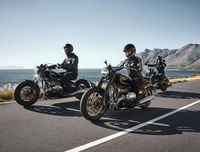
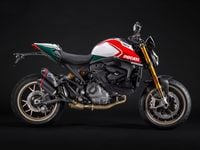
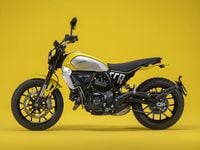
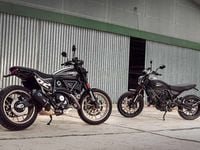
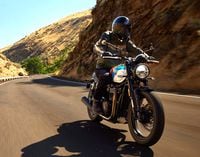
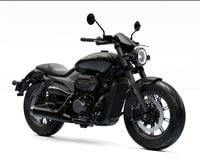

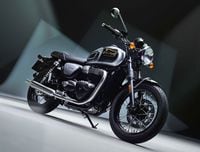
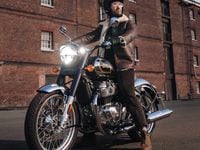
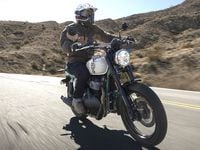
/cloudfront-us-east-1.images.arcpublishing.com/octane/3VSTLPKOHNFTRJTIAAXDPGCPA4.jpg)
